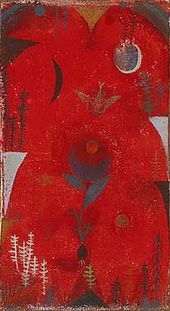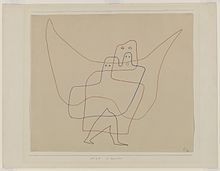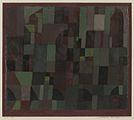Dear Zazie, Here is the Lovers’ Chronicle for today from Mac Tag dedicated to his muse. Whose words are important to you? Are their words enough? Rhett
The Lovers’ Chronicle
Dear Muse,
© copyright 2020 mac tag/cowboy coleridge all rights reserved
© copyright 2019 mac tag/cowboy coleridge all rights reserved
transitions
in a small hotel
i was comin’
and she was goin’
one night
when i could not sleep
i walked down to the lobby
and there she was
i made tea
and she joined me
we talked
all the way
to first light
about the places
we had been
about music,
and art,
and poetry
we saw each other
every night after that
we created a place
where we could be
and we danced
© copyright 2018 mac tag/cowboy coleridge all rights reserved
thanks bret
the hush, hoverin’
remindin’ me
of the vanished
“But don’t you miss
companionship?”
no not really
callin’ this, a needed
transitional phase
an interstitial place
of heightened Presence
learnin’ to cherish
the in-between-ness
of what-has-been-
shall-not-continue
and what-is-to-be-
is-yet-to-be-seen
© copyright 2017 mac tag/cowboy coleridge all rights reserved
the valley, golden hues and purple shades
the speakin’ west wind and cold silent night
and watchin’ eyes with their wonderful light
so wrought upon me that i should never
have left them at all
sunset and twilight give way to night
the wind whistles melancholy notes
the campfire burns down to red embers
a subtle difference apparent
in all of this or else
the shadowy change
is in us
© copyright 2016 mac tag/cowboycoleridge all rights reserved
More Than Just Words
Waitin
And anticipatin
Her touch
Her soft caress
Wishin
She was lyin near me
Right now
Right here with me
Dreamin
About bein with her
About
Us together
Hopin
Our time with each other
Will last
And have no end
Wantin for her all that she wants
From love
From this wide world
Needin
All that life can give me
I need
More than just words
© copyright 2012 mac tag/Cowboy Coleridge all rights reserved
The Song of the Day is “More Than Words“ by Extreme. © 2004 A&M Records
| Paul Klee | |
|---|---|

Paul Klee in 1911
|
Today is the birthday of Paul Klee (Münchenbuchsee, Switzerland; 18 December 1879 – 29 June 1940 Muralto, Switzerland); artist. His style was influenced by movements in art that included Expressionism, Cubism, and Surrealism. Klee was a natural draftsman who experimented with and explored color theory. His lectures Writings on Form and Design Theory (Schriften zur Form und Gestaltungslehre), published in English as the Paul Klee Notebooks, are held to be as important for modern art as Leonardo da Vinci’s A Treatise on Painting for the Renaissance. He and his colleague, Russian painter Wassily Kandinsky, both taught at the Bauhaus school of art, design and architecture. His works reflect his dry humor and his sometimes childlike perspective, his personal moods and beliefs, and his musicality.
Klee began studying art at the Academy of Fine Arts in Munich. He excelled at drawing but seemed to lack any natural color sense. He later recalled, “During the third winter I even realized that I probably would never learn to paint.” During these times of youthful adventure, Klee spent much time in pubs and had affairs with lower class women and artists’ models.
Gallery






Dame mit Sonnenschirm, 1883–1885, pencil on paper on cardboard, Zentrum Paul Klee, Bern

Hilterfingen, 1895, ink on paper, Solomon R. Guggenheim Museum, New York

Third Invention: Jungfrau im Baum, 1903, etching, Museum of Modern Art, New York

Sixth Invention: Zwei Männer, einander in höherer Stellung vermutend, begegnen sich, 1903, etching, Zentrum Paul Klee, Bern

Aged Phoenix,1905,etching, Solomon R. Guggenheim Museum, New York

Fenster und Palmen, 1914, watercolor on grounding on paper on cardboard, Kunsthaus Zürich, Zurich

In den Häusern von St. Germain, 1914, watercolor on paper on cardboard, Zentrum Paul Klee, Bern

Föhn im Marc’schen Garten, 1915, watercolor on paper on cardboard, Lenbachhaus, Munich

Acrobats, 1915, watercolor, pastel and ink on paper, Solomon R. Guggenheim Museum, New York


Red/Green Architecture (yellow/violet gradation), 1922, oil on canvas on cardboard mat, Yale University Art Gallery, Yale University, New Haven, Connecticut

Senecio, 1922, oil on gauze, Kunstmuseum Basel, Basel

Fright of a Girl, 1922, Watercolor, India ink and oil transfer drawing on paper, with India ink on paper mount, Solomon R. Guggenheim Museum, New York

Zeichen in Gelb, 1937, pastel on cotton on colored paste on jute on stretcher frame, Foundation Beyeler, Riehen near Basel

Nach der Überschwemmung, 1936, wallpaper glue and watercolors on Ingres paper on cardboard

Revolution des Viadukts, 1937, oil on oil grounding on cotton on stretcher frame, Hamburger Kunsthalle

Die Vase, 1938, oil on jute, Foundation Beyeler, Riehen near Basel

Heroische Rosen (Heroic Roses), 1938, oil on canvas, Kunstsammlung Nordrhein-Westfalen, Düsseldorf

Insula dulcamara, 1938, oil color and colored paste on newsprint on jute on stretcher frame, Zentrum Paul Klee, Bern

Ohne Titel (Letztes Stillleben), 1940, oil on canvas on stretcher frame, Zentrum Paul Klee, Bern

Mac Tag
The Light of Lights
Looks always on the motive, not the deed,
The Shadow of Shadows on the deed alone
– W. B. Yeats



No Comments on "The Lovers’ Chronicle 18 December – transition – art by Paul Klee"